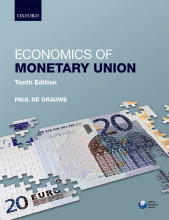Financial stability
14 important questions on Financial stability
What is systemic risk?
Describe the cyclical and structural dimension of systemic risk & how a boom in credit growth can impact both dimensions of systemic risk?
Refers to the risk that financial imbalances - in the form of credit & liquidity cycles - can build up in a boom period leading to bubbles, which when burst, may cause an adverse effect on growth. Agents assume excessive risk in upswing (overinvest) /overly risk averse in downswing.
cross section (structural): distribution of risk across financial system at given point in time
Refers to the risk arising from similar investment & interconnectedness of financial intermediaries. Institutions are directly exposed to the same or similar asset classes.
Describe what makes financial systems prone to risk
2. asymmetric info: adverse selection & moral hazard
3. feedback & amplification mechanisms: 1. illiquid assets 2. maturity mismatches between assets & liabilities and 3. leverage
- Higher grades + faster learning
- Never study anything twice
- 100% sure, 100% understanding
Differentiate between macro-and microprudential supervision concerning their aims
to supervise and limit the distress of individual financial institutions, with the ultimate objective of protecting the customers of the institution in question
> mitigate/prevent the risk of contagion
macro
focus on the soundness of financial system as a whole. Limit financial system-wide distress, protecting the overall economy from significant losses in output
Formulate the four intermediate objectives of macroprudential supervision according to the dimensions
1. excessive credit growth & leverage
- key drivers of bubbles & subsequent crisis
- leverage is the amplifying channel
2. excessive maturity mismatch and market illiquidity
- reliance on short term & unstable funding
- lead to FIRE sales, illiquidity & contagion
Cross sectional dimension
1. direct & indirect exposure concentrations (common shocks)
- directly via balance sheet exposures
- indirectly through asset fire sales & contagion
2. misaligned incentives & moral hazard
- systemically important financial institutions + implicit government guarantees
Macroprudential monitoring & analysis focuses on these risk dimensions
What are SIFIs? Describe the assessment methodology in five categories.
1. cross-border activity
2. size
3. interconnectedness
4. substitutability
5. complexity
What is stress testing? How can it be useful?
Stress tests can be useful because historical data often doesnt provide sufficient info about the behaviour of markets under extreme events.
How is risk characterized for macro- and microprudential supervision?
> risk of aa shock is generated & amplified within the system
micro (exogenous)independent of individual agents' behaviour
> risks emanating from agents' environment
4 problems. 1. Excessive credit growth & leverage 2. Exposure concentration, 3. Excessive maturity mismatch & market illiquidity 4. Misaligned incentives
State for every problem under which pillar it stands and what indicators are used to analyze them.
2. Structural pillar: Interconnectedness, price contagion
3. Cyclical pillar: Structural funding ratio, Short term liquidity stress indicators
4. Structural pillar: Size, complexity, substitutability
Explain the difference between macro and micro prudential instruments
Describe the key macro prudential instruments under the cyclical pillar
a. counter cyclical capital buffer
b. capital instruments (e.g. leverage ratio)
c. LTV/LTI caps
2. excessive maturity mismatch and market illiquidity
a. stable funding restrictions
b. liquidity charges
Describe the key macro prudential instryments under the structural pillar
large exposures restrictions
2. misaligned incentives.
a. SIFI capital surcharges
b. systemic risk buffer
What is the CCR/CRD IV package?
countercyclical buffer: to counteract the effects of the economic cycle on banks' lending activity
use of pillar II: ability to impose additional requirements on a specific bank
national flexibility measures: allowing national authorities to impose stricter prudential requirements (adressing systemic risk)
real estate related instruments
member states retain the possibility to set higher risk weights for real estate lending, thereby being able to address real estate bubbles
leverage ratio: to limit the growth of the total balance sheet as compared to available own funds
Name a main reactive instrument that can be used in crisis situations
target: rescue a bank's critical functions
The question on the page originate from the summary of the following study material:
- A unique study and practice tool
- Never study anything twice again
- Get the grades you hope for
- 100% sure, 100% understanding
































